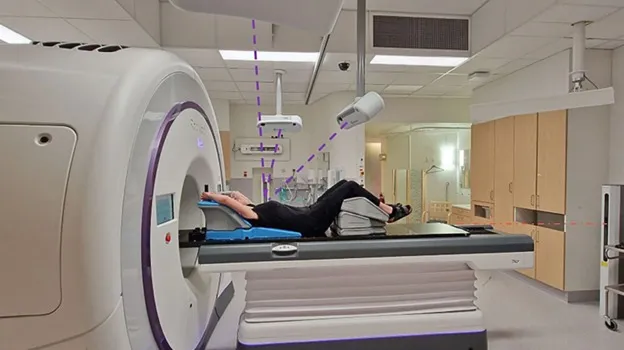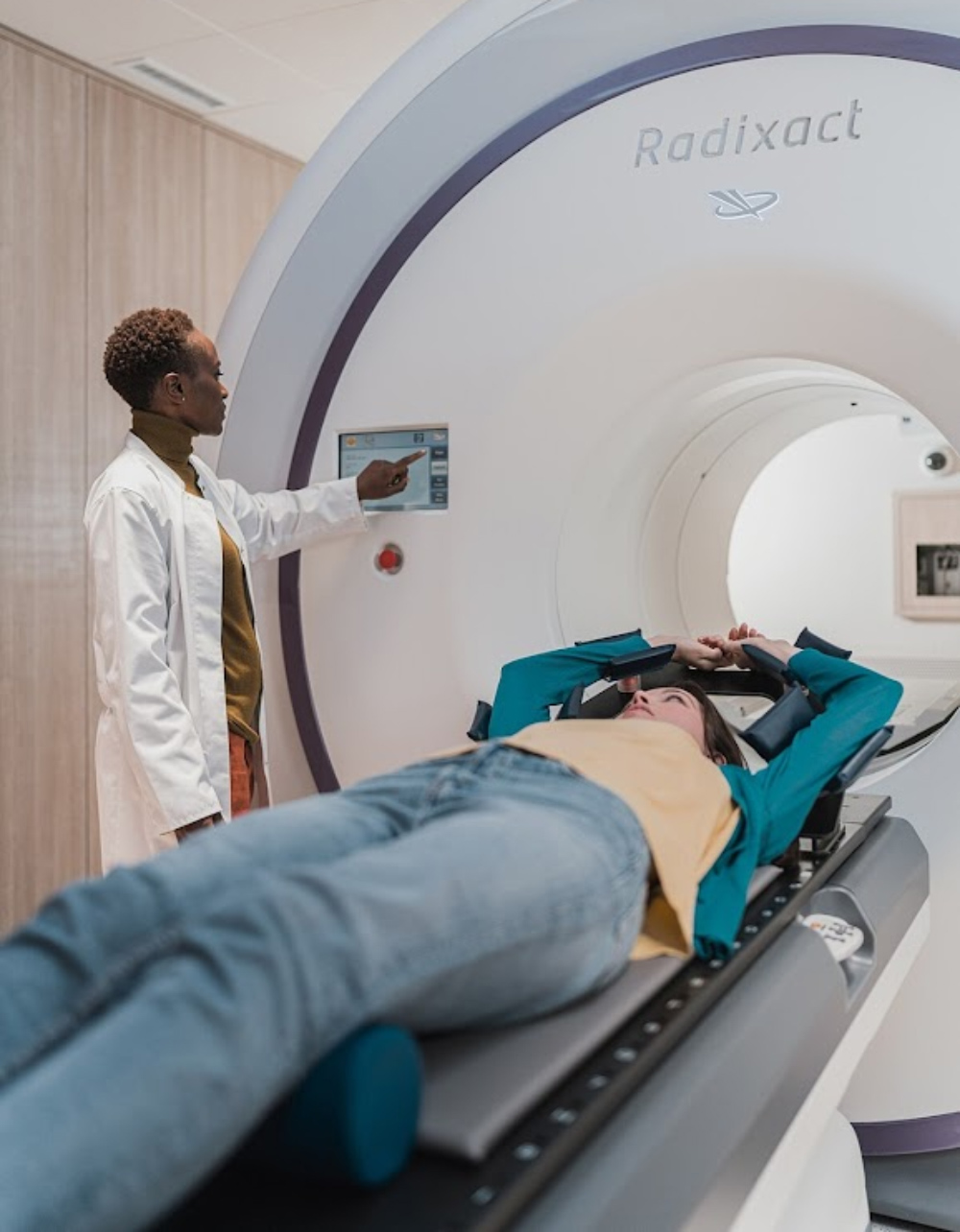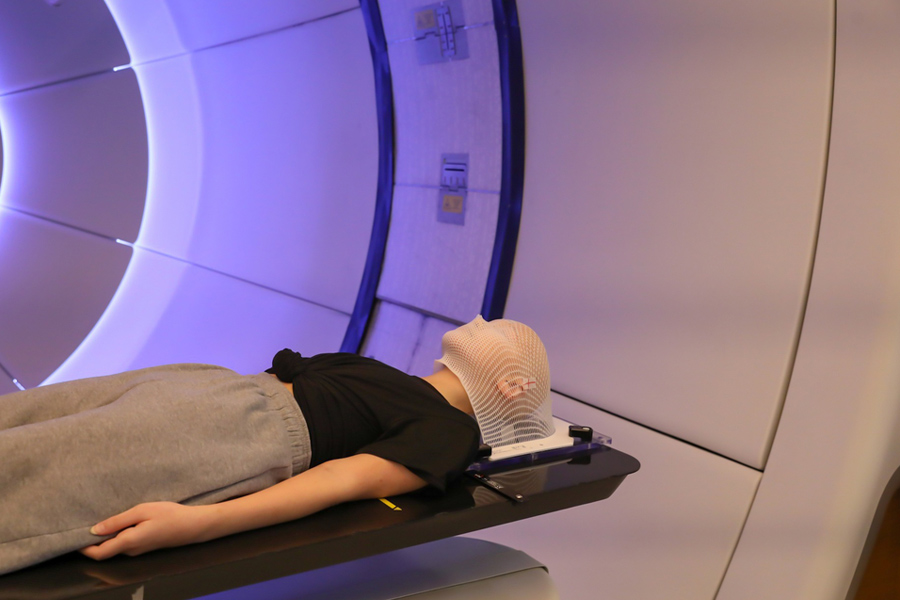
Cancer is no longer a full stop to life with the rising advancements in its treatment. One such procedure is radiation therapy, a cancer treatment that uses high doses of radiation to kill cancer cells. Also known as radiotherapy, it is one of the most commonly used treatments, which can be used to treat any cancer. On World Cancer Day 2025, observed on February 4, 2025, we spoke to Dr Sanjay MH, MBBS, DNB, Fellowship in Stereotactic Radiosurgery, Pune, who explained the role of advanced radiation therapy in treating complex cancer.
Table of Content:-
What Is Radiation Therapy?

"Radiation therapy uses high doses of radiation to kill cancer cells or slows their growth by damaging their DNA. This treatment does not kill cancer cells right away; it takes days or weeks of treatment before the DNA is damaged enough for cancer cells to die," said Dr Sanjay.
Radiation machines currently used in clinical practice are the result of evolution over a long period of time. Various areas of science, such as medical physics, mechanical engineering, and computer engineering have contributed to the continual development of technology.
According to the National Cancer Institute, US, the type of radiation therapy you'll undergo depends on various individual factors, including the type of cancer, the size and location of the tumour, its proximity to sensitive tissues, your overall health and medical history, and whether you'll be receiving other cancer treatments. Additionally, your age, other medical conditions, and personal circumstances will also influence the decision.
Key Advancements in Radiation Therapy
Proton Therapy

Proton Therapy is a type of radiation therapy that uses high-energy protons to damage the DNA in cancer cells. This type of treatment is non-invasive, painless and precise. "Proton beams offer precise control, allowing doctors to accurately target the affected tissue while minimising damage to surrounding healthy tissue, often resulting in little to no harm. This treatment is more precise than other types of radiation therapy, and with greater precision and accuracy, proton therapy can offer several benefits," said Dr Sanjay.
Also Read: World Cancer Day 2025: Expert Lists Side Effects Of Liver Cancer Treatment You Didn't Know About
Stereotactic Body Radiotherapy (SBRT)
SBRT is a radiation therapy that uses many energy beams. The beams are carefully targeted to focus on the growth of cells. SBRT is used to treat tumours in the lungs, spine, liver, neck, lymph nodes or other soft tissue. SBRT is also called Stereotactic Ablative Radiotherapy (SABR), and when used on the brain, it is known as Stereotactic Radiosurgery (SRS).
Image – Guided Radiation Therapy (IGRT)
IGRT treatment kills cancer cells and shrinks or eliminates tumours. "It is a type of External Beam Radiation Therapy (EBRT) and uses a machine called a linear accelerator. The machine directs targeted radiation in the form of high-energy X-rays into cancerous cells and tumours to destroy them," explained Dr Sanjay.
IGRT is used to treat lung cancer, prostate cancer, and brain cancer. This treatment takes 15-20 minutes, but there may be times when a session will last 30 minutes to an hour. IGRT is effective and safe to treat cancerous tumours in areas of the body that move or require exact targeting.
Also Read: Liquid Biopsy: Expert Explains How This Non-Invasive Technique Helps Detect Cancer Early
Artificial Intelligence and Machine Learning in Radiation Oncology

Emerging technologies like artificial intelligence and machine learning can pave the way for a new era in cancer treatment. With cutting-edge technologies like IGRT and SBRT, oncologists can precisely target tumours with minimal damage to surrounding healthy tissue.
The Tomo Therapy platform is the first in the world capable of helical radiation treatment delivery. Image-guided, intensity-modulated radiation therapy (IG-IMRT) is continuously delivered from multiple 360-degree rotations around the patient, providing greater control of the radiation dose. It conforms precisely to the tumour and helps minimise dose to healthy tissue and sensitive organs. The unique design of the helical system, featuring integrated CT imaging and helical delivery, provides the treatment team with the ability to see the shape and location of the tumour, anywhere in the body in real-time before each treatment session.
Dr Sanjay added, "Technology advances, such as the introduction of IGRT, have enabled smaller treatment volumes, shorter treatment schedules, improved outcomes, and minimised toxicity. Hypofractionation, which involves delivering fewer fractions of radiotherapy with a higher dose per fraction, has become increasingly common. As delivery techniques have improved in accuracy, they have also helped boost efficiency. The most common examples are SBRT and SRS, delivering full treatment over 1-5 sessions."
These technological advances in planning and treatment delivery have helped to drive new practices in radiotherapy into the need for precise image guidance, patient immobilisation, and motion management may contribute to the perception of complex workflows that can be resource-intensive and prohibitive.
[Disclaimer: This article contains information provided by an expert and is for informational purposes only. Hence, we advise you to consult your professional if you are dealing with any health issue to avoid complications.]
Also watch this video
How we keep this article up to date:
We work with experts and keep a close eye on the latest in health and wellness. Whenever there is a new research or helpful information, we update our articles with accurate and useful advice.
Current Version